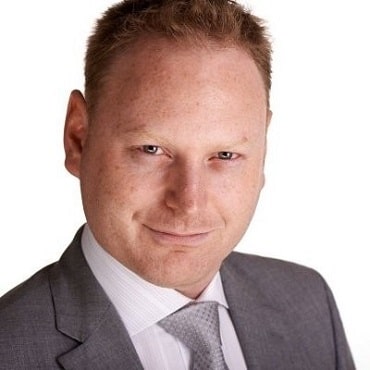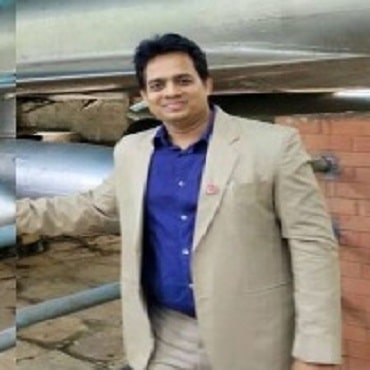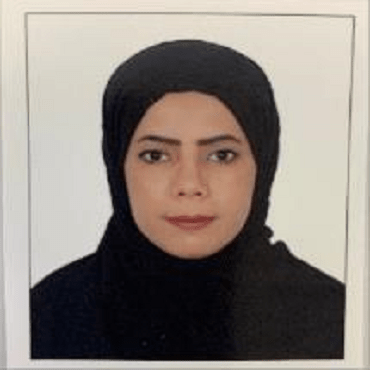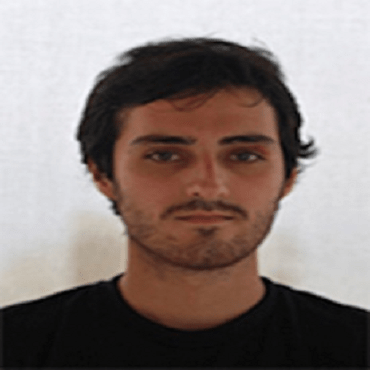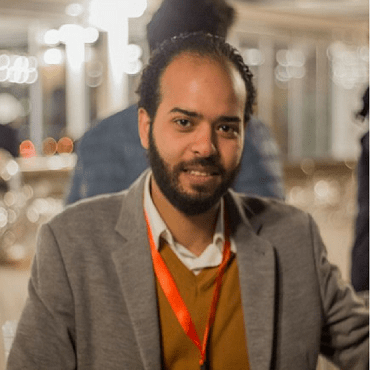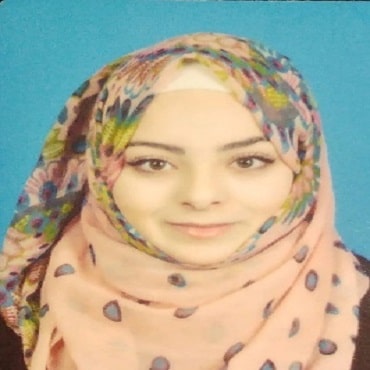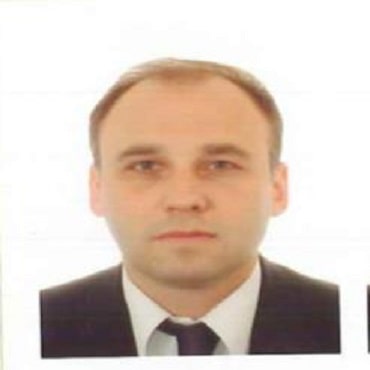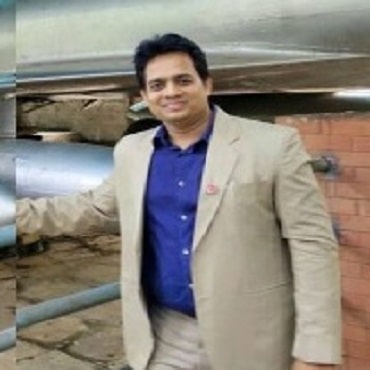Scientific Program
Keynote Session:
Title: 3D Printing technique to fabricate dental restorations
Biography:
Pirkko-Liisa Tarvonen has a Specialist degree in Dental Public Health from the University of Turku, Finland, and a PhD degree from the University of Eastern Finland. She acts as Dental Marketing Director at Rayo 3D-Toothfill Ltd. and as University Lecturer at the University of Helsinki and at the University of Eastern Finland. As voluntary project coordinator in a development cooperation program she has had a contribution to primary dental care and dental education in the Democratic People’s Republic Korea.
Abstract:
Title: 3D printing technique to fabricate dental restorations
Biography:
Dr. Pirkko-Liisa Tarvonen has a Specialist degree in Dental Public Health from the University of Turku, Finland, and a PhD degree from the University of Eastern Finland. She acts as Dental Marketing Director at Rayo 3D-Toothfill Ltd and as University Lecturer at the University of Helsinki and at the University of Eastern Finland. As voluntary project coordinator in a development cooperation program she has had a contribution to primary dental care and dental education in the Democratic People’s Republic Korea.
Abstract:
Additive CAD/CAM (computer-aided design and computer-aided manufacturing) technology has been used in dental labs to manufacture splints, surgical guides, removable dentures, crowns and facial prostheses, and chairside to fabricate orthodontic aligners. Dental caries remains as one of the main health problems globally. Direct filling technique with composite has several shortcomings. Especially large fillings in lower posterior teeth are challenging. Indirect restorations are developed to overcome the challenges linked with direct restorations.Our solution to the problem is RAYO 3DToothFill. This novel technique for dental restorations is a concept based on modern 3D manufacturing techniques utilizing digital imaging and 3D printing to fabricate the filling on a single visit to a clinic. It includes preparation of a tooth, tooth imaging, automated filling processing outside the mouth and fixation of the filling on the tooth. Based on an in vitro study carried out in University of Eastern Finland, Kuopio, Finland, the accuracy of 3D printing technique overcomes that of milling technique in the fabrication of dental inlay and onlay fillings. Major advantages compared to current solutions in addition to accuracy of the restoration include lower cost, possibility to layering and tailoring properties, suitability for existing filling materials and material use efficiency. The project is devoted to preparation of commercialization. Additional clinical investigations are planned to carry out during 2019 to confirm the findings. This 3D printing technique has been developed by a team of professors and experts from the University of Eastern Finland and University of Oulu. International patent pending.
Title: 3D Printing for industrial operations: The impact on digital strategies
Biography:
Morgan Eldred passionate in providing industry insights and actionable advice to organisations on their digital industry in UAE.
Abstract:
3D printing maximises the potential of industrial operations that operate on a massive scale by reducing prototyping lead times and cost. It therefore comes as little surprise to learn that use cases for 3D printing within industrial operations for energy and construction industry are rapidly increasing.Gartner predicted that by 2019, 10 percent of all O&G, as well as oilfield service, companies would be using 3D printers for the production of parts and equipment used within operations. While 3D printing technology is not yet ready to replace large-scale industrial fabrication of equipment, it does offer value-add potential in the near and long terms. For the nearterm, 3D printing offers value by significantly reducing the time required for rapidly building 3D scaled models of construction projects; or for prototyping, producing, reworking and redesigning physical components.Longer term, 3D printing is positioned to play a key role within industrial operations supply chain’s by transforming how components of a wide range of equipment are produced. The use of 3D printing will create significant value, particularly in locations where the supply of ordinary parts is limited, or where shipping and customs clearance for parts are likely to cause time delays. The longer term benefits of 3D printing cannot be achieved easily, as they will require significant security best practices and IT architectures to address issues such as preventing IP theft, counterfeiting, ensuring the quality, durability and performance of 3D-printed parts.
Oral Session 1:
- 3D Printing & Additive Manufacturing |3D Ceramics|3D Fashion & Digital Industry|Medical 3D Printing Orthodontics & Prosthetics|3D Printing Designs & Modelling|3D printing Materials|Tissue Engineering & Fabrication

Chair
Morgan Eldred
Digital Energy, UAE

Co-Chair
Pirkko-Liisa Tarvonen
Rayo 3D-Toothfill Ltd., Finland
Title: 3D Graphy lab is a set up instituted for medical hospital, dental hospitals
Biography:
Shibhu John, is a media respondent and have almost 22 years of experience in media. He has completed his PhD, with his thesis on media consolidation with concepts from National Institute of management, Mumbai University, India. He is the founder and CEO of Trinity Media & Marketing Solutions a company promoting upcoming technologies. Currently the main focus is Artificial Intelligence, block chain and 3D Printing. He is the Founder of AI world, block chain world, 3D Printing world & 3D Graphy. He is also the promoter of 3D Printing World Comminity a community of leaders, experts, sector representatives and 3D printing cos.
Abstract:
3D graphy is a global platform for training, education, technology consultation & Service. And 3D Graphy lab is a set up instituted for Medical Hospital, Dental Hospitals, Medical Colleges, Dental Colleges, Private medical institutions offering a one-stop solutions in Imaging, Design, Scanning, 3D printing, Training & Services. The set up will benefit the Dental, Maxillofacial, Craniofacial, Orthopedic, Plastic Surgery, Prosthetics, Bioprinting, research, medical devices and other clinical requirements across specialisations.
Title: The possibility of reviving traditional embroidery clothing through new technology
Biography:
Hind Mosfeer Saeed Al Gamdy is a lecturer at the Taif University in the Kingdom of Saudi Arabia teaching fabric clothing courses in the Home Economics Depertment. Currently, she is studying PhD at the Cranfield University on the topic of Reviving traditional embroidery clothing in the westren region of Saudi Arabia.
Abstract:
Saudi Western region is known for its traditional embroidery clothing for both men and women. It has been suggested that traditional handcraft is under threat as locals finding western brands more appealing. However, the key cause of the decline in the demand of traditional clothing lies in the outdated manufacturing techniques that do not meet the current market trends such as demand for greater customer autonomy, customization, and value for money. To this end, the current paper aimed at identifying manufacturers and customers perspectives on introducing new technology to revive the industry. The author attended the fashion exhibition “Souq-Okaz” to interview ladies who manufacture traditional embroidery clothing at their home.Sixteen people were interviewed to identify their perspective on introducing new technology to produce embroidery clothing. Furthermore, 210 responses were collected through a conducted survey on the students of three universities such as Umm AlQura University, King Abdulaziz University, and Taif University. The aim of the survey was to ascertain whether customers perception of embroidery clothing made through using new technology. Interview results revealed that while most of the manufacturers would welcome new technology however they showed various concerns such as the availability of technology, lack of training and materials stability to stand washability and wearability perspectives. In contrast, survey results revealed that while there is interest in embroidery clothing and argued that they would accept embroidery clothing made through using new technology provided that it meets similar taste, meet current fashion trend,would recommend family and friends and finally would prefer to premium clothing.
Title: PLA and PETG applied to extrusion-based 3D printed snap-fit connections for product assembly
Biography:
Leonardo Santana is a Professor at the Federal Institute of Santa Catarina (IFSC). He is attending University of Porto (UP)'s School of Mechanical Engineering Doctorate Program with CNPq scholarship. Master by the Federal University of Santa Catarina (UFSC)'s School of Mechanical Engineering Graduation Program. Has six years of experience in open source 3D printing research. Jorge Lino Alves is an Associate Professor at the faculty of engineering of UP and adjunct director of the master program in product and Industrial design. Aurelio da Costa Sabino Netto has a PhD from the mechanical engineering graduation program at UFSC.
Abstract:
The goal of this work is to investigate the capabilities of low-cost extrusion-based 3D printing on building snap-fit connections to develop products for assembly. At first, we have conducted studies to recognize user-printing system relations, and to identify challenges when building parts with such connections and the influence factors in the quality of the printed components.The following step was planning the snap fit printing by selecting building materials, and analyzing de friction between surfaces, and the assembly force behavior after successive insertion/removal cycles. We have studied two polymers: Poly acid lactic (PLA) and Polyethyletherphthalate Glycol (PETG). Preliminary results show that the PETG elements, due to its flexibility, present better answers to cyclic loads, with long stages of assembly force stabilization, while the PLA parts, due to the greater stiffness and low deformation capacity of the material, present permanent damage in its structure. In product development, PETG offers advantages for applications where assembly and disassembly are required, and PLA, which has a higher mechanical strength, can be used in single assembly designs.
Title: 3D printing materials and methods
Biography:
Mohammad Bashier is the Co-Founder of 3D Fabrigate at Egypt. He studied his graduation in Helwan University. He also worked as automative engineer in Toyota, Cairo, Egypt.
Abstract:
Additive Manufacturing is growing rapidly over the last couple of years continuing to take over more sectors of industrial production. Due to its cost effective, and more reliability and versatility, AM is currently adapted as the optimum route for engineering production. The substantial growth numbers alongside its effectiveness led countries to fund more research projects to further develop the technology. As more production equipment got developed, new materials got available allowing the technology adaptation in more industries. Currently there are a wide range of materials categorized under six main different types, ranging from polymers, metals, composites, ceramics and biomaterials, and seven different processes; ranging from DED, power bed fusion to material/binder jetting and vat photopolymerirzation. Producing more product applications was the main focus of research, especially after the breakthrough in the metal AM industry, allowing the technology to take over the industries of automotive, aerospace and medical equipment for its accuracy. There are a lot of challenges when comes to the usage of additive manufacturing such as the speed of production and its consistency and as such companies and institutions the world over are racing to develop a faster and more consistent Additive manufacturing Technologies and introduce more uses for the Technologies.
Title: Dental 3D printing emerging in clinical use in the middle east and african countries
Biography:
Samah Zahlaf has completed her bachelor’s degree in Dentistry and Oral surgery in 2015 from Al-Quds University in East Jerusalem, Palestine, and now she is completing her master’s degree in general toxicology and health risk assessment at the University of Eastern, Finland.
Abstract:
CAD/CAM technology combing 3D imaging, digital modelling and manufacturing using milling technique has had a role in dentistry for over thirty years. 3D printing was introduced more than 20 years ago, but only during the last decade became a reality in dentistry due to the development of different technologies such as photopolymerization, fused deposition modelling, multijet and selective laser sintering, as well as different biomaterials: polymers, metals, ceramics and composites. 3D printing is currently used in the dental labs in different fields of dentistry, to fabricate e.g. splints, surgical guides, removable dentures, crowns, facial prostheses and orthodontic aligners. The flexibility of 3D printing contributes in improving patients comfort and decrease chair-time with usually more accurate end-results. The use of 3D printing in dentistry is also spreading in the Middle East and Africa (MEA) like everywhere else. Its expenditure reached USD 16.3 million in 2018 in MEA, which covers 1% of the global dental 3D printing market. The United Arab Emirates (UAE) has a future strategy to make Dubai the capital of 3D printing by 2025. South Africa plans to invest in healthcare 3D printing development and research. Moreover, the area has many advantages to attract more international investments and the market is predicted to grow 19% annually. RAYO 3DToothFill is a novel technique to manufacture demanding 3D indirect, precisely fitting restorations chairside to be smoothly fixed on prepared teeth with less discomfort and pain for the patient.
Title: Truly comprehensive solutions to produce ceramic parts with 3D printing
Biography:
Svintiski Rouslan, 3DCeram area sales manager, graduated from ISCV of Conservatoire National des Arts et Metiers (France). Former sales manager of Ceric, an engineering company specialized in turnkey solution production of heavy clay building materials. More than 25 years of experience in ceramic process and technologies.
Abstract:
3D printing lets users push back production limits. Ceramics are no exception to the rule, but until now, the use of this material was reserved to ceramics experts. To open up this technology to a wider spread of professionals 3DCeram is sharing its maker experience to propose truly comprehensive solutions, depending both on users’ expertise and the type of production they need. Thanks to its large platform and high resolution, Ceramaker 3D printer is particularly suited to series production. High quality parts, made of 3DMix ceramic pastes developed by 3DCeram, get the same properties as those produced via traditional processes.The company also offers a cleaning booth and furnaces to deliver a turnkey production line to its customers. Assistance and support service will ensure they acquire the necessary know-how to produce parts independently.
Title: Enhanced performance of 3D printed biomaterials with composite approach
Biography:
Reijo Lappalainen(PhD) works as a Biomaterials Technology professor and a responsible project leader at the University of Eastern Finland, Dept. of Applied Physics with his Biomaterials Technology Group of about a dozen members. Recently R. Lappalainen has been very active in the development of ultra-short pulsed laser ablation techniques, biorefining, slow pyrolysis, biocomposites and novel nanomaterials. He has a long-term experience in cooperation with companies and is actively involved in several spin offs. He is an author in about 206 peer reviewed scientific publications and in about 310 patents and extended abstracts.
Abstract:
Our natural bone and tooth tissues are based on a complex hierarchical structure utilizing collagen fibers bundled together with proteins and reinforced with ceramic mineral crystals such as hydroxyapatite. Furthermore, fine-tuning of the composition and structural features allows building layered structures such as cancellous porous bone covered by a high-density hard cortical bone or an elastic dentine core of a tooth with a hard enamel surface layer. These lead to optimal performance.In modern restorative dentistry, the aim is to match properties of the restoration and the tooth to achieve good long-term performance. Multicomponent composites are developed with biomimetic scope, i.e. to mimic natural tooth structure and function. Conventionally particulate filler composites (PFC) are used but more recently such as short fiber-reinforced composites (SFRC) and nanofiller composites have been developed. Furthermore, current composites utilize light, chemicals or their combination for curing. By composite approach several advantageous properties of biomaterials have been achieved such as greater stiffness, higher elastic limits, higher fracture resistance and lower wear.Different materials and composites have emerged in 3D-printing techniques in medical industry and even clinical practice allowing producing well-controlled designs with complex structure, composition and shapes. 3D printing is currently used to fabricate, e.g. surgical tools and guides, patient-specific surgical models, removable dentures, splints, scaffolds, facial prostheses and orthodontic aligners. The use of these materials and products is slowly moving from temporary to permanent restorations.
Title: Using three dimensional printing technology to revive traditional embroidery clothing
Biography:
Hind Mosfeer Saeed Al Gamdy is a lecturer at the Taif University in the Kingdom of Saudi Arabia teaching fabric clothing courses in the Home Economics Department. Currently, she is studying PhD at the Cranfield University on the topic of Reviving traditional embroidery clothing in the western region of Saudi Arabia.
Abstract:
Three-dimensional printing (3DP) has been used in the global fashion industry since 2010; however, it has never been used to print traditional embroidery clothing. It is important to introduce new technology to revive traditional embroidery industry in Saudi Arabia because traditional methods do not match the need of fast fashion concept, demand for greater customer autonomy and customisation and value for money. This paper aims to test the potential of using 3D printing technology to produce embroidery designs. By using Ultimate 2+ 3D printing, various designs of embroidery clothing samples are prepared. Three types of fabric such as plain cotton, shiny satin and nylon organza have been used to print embroidery designs. Thermoplastic polyurethane (TPU) was used to print embroidery designs. On all the samples similar test parameters such as 0.4m nozzle size, 240C,245C and 250C nozzle temperature, 70C bed temperature,0.25mm,0.50mm, and 1.00mm layer thickness were set. Results show that 3DP possess a real potential to help traditional embroidery clothing gaining its lost position in the Saudi fashion industry.
Title: Technology Consultation and Services 3D graphy a global platform
Biography:
Shibhu John, is a media respondent and have almost 22 years of experience in media. He has completed his PhD, with his thesis on media consolidation with concepts from National Institute of management, Mumbai University, India. He is the founder and CEO of Trinity Media & Marketing Solutions a company promoting upcoming technologies. Currently the main focus is artificial Intelligence, block chain and 3D printing. He is the founder of AI world, Block Chain world, 3D Printing world & 3D Graphy. He is also the promoter of 3D Printing World Comminity a community of leaders, experts, sector representatives and 3D printing cos.
Abstract:
3D Graphy is a global platform for training, education, technology consultation & Service. And 3D Graphy lab is a set up instituted for Medical Hospital, Dental Hospitals, Medical Colleges, Dental Colleges, Private medical institutions offering a one-stop solutions in Imaging, Design, Scanning, 3D printing, Training & Services. The set up will benefit the Dental, Maxillofacial, Craniofacial, Orthopedic, Plastic Surgery, Prosthetics, Bioprinting, research, medical devices and other clinical requirements across specialisations.The lab is an institutional body providing an end to end solution with 3D printing for medical prototypes for students for hands-on training and study. For professionals like doctors and surgeons it is a means for diagnosis with pre-op planning before the actual surgery for a successful procedure. It is also used for actual implants in dental, maxillofacial, orthopedics were the part can be 3D Printed in metal like cobaltcrome , stainless steel, titanium and biocompatible material like peek and various materials which are approved by FDA and authorised medical bodies.



